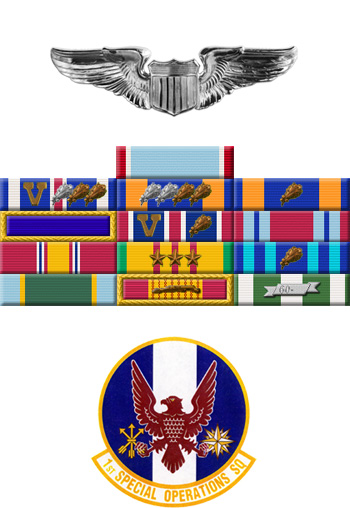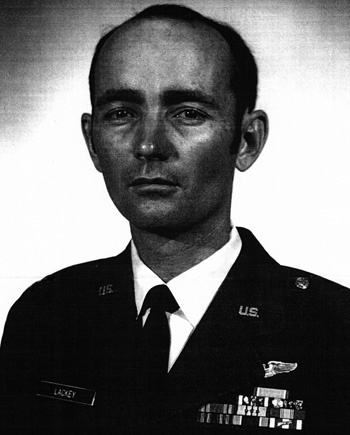
|
John E. Lackey |
 |
|||
| Rank, Service | ||||
Captain O-3, U.S. Air Force |
||||
| Veteran of: | ||||
|
||||
| Tribute: | ||||
John Lackey was born on June 8, 1945, in Colorado Springs, Colorado. He entered Officer Training School at Lackland AFB, Texas, on January 2, 1968, and was commissioned a 2d Lt in the U.S. Air Force on March 28, 1968. Lt Lackey graduated from Undergraduate Pilot Training at Moody AFB, Georgia, and was awarded his pilot wings in July 1969. He was then trained in psychological warfare, where he flew the O-2B Milirole with the 9th Special Operations Squadron at Tuy Hoa AB and Da Nang AB in the Republic of Vietnam from November 1969 to March 1971. Lackey then went through A-1 Skyraider Combat Crew Training, and flew with the 1st Special Operations Squadron at Nakhon Phanom Royal Thai AFB, Thailand, until May 1972. During his two tours in Southeast Asia, Lackey flew 470 combat missions and was awarded the Air Force Cross, 8 Distinguished Flying Crosses, and 15 Air Medals. After Vietnam, Capt Lackey served as an A-1 instructor pilot with the 4407th Combat Crew Training Squadron at Eglin AFB, Florida, until he left active duty on July 17, 1973. He then joined the New Mexico Air National Guard, serving with the 150th Fighter Group, and was later killed in a flying accident in an A-7 Corsair II near Socorro, New Mexico, on May 1, 1978. He was buried at the Fairview Cemetery in Tularosa, New Mexico. |
||||
|
||||

